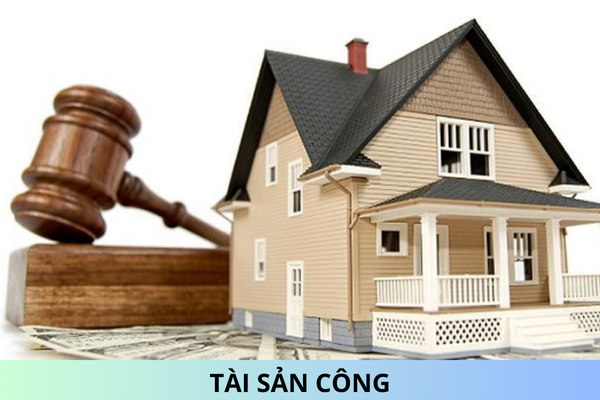What are procedures and scope of radiation control and decontamination in dealing with radiation incidents in Vietnam?
What are procedures and scope of radiation control and decontamination in dealing with radiation incidents in Vietnam? What is content of process of radiation control and decontamination in dealing with radiation incidents in Vietnam? I have questions about the above issues, hope to be answered according to the provisions of the law.
What are procedures and scope of radiation control and decontamination in dealing with radiation incidents in Vietnam?
According to Section I, Appendix I.8 issued together with Circular 08/2022/TT-BKHCN (effective from July 22, 2022) the procedures and scope of radiation control and decontamination in dealing with radiation incidents are regulated:
1. Purpose
This procedure prescribes radiation control and decontamination activities according to the response plan approved by the Field Commander.
2. Scope and subjects of application
This procedure applies to the forces participating in the incident response work according to their assigned functions or tasks or according to the dispatch of the Field Commander.
What is content of process of radiation control and decontamination in dealing with radiation incidents in Vietnam?
In Section I.3, Appendix I.8 issued together with Circular 08/2022/TT-BKHCN (effective from July 22, 2022) the content of process of radiation control and decontamination in dealing with radiation incidents:
3.1. Diagram
1. Gathering and deploying forces and equipment
2. Preparing for human radiation control
3. Setting up an area for human radiation control and decontamination
4. Conducting human radiation testing
5. Conducting human decontamination
6. Ending human radiation control radiation and decontamination
3.2. Explain
Step 1: Gather and deploy forces and equipment
- Gather forces and equipment in the direction of the wind and right outside the radiation safety belt.
- Check the number, type and operating status of equipment.
- Check the quantity and quality of equipment, auxiliary tools such as protective clothing, masks, gloves, personal radiation dosimeters, etc.
Step 2: Prepare to test people
- Before approaching objects suspected of radioactive contamination, radiation control personnel must be equipped with personal protective equipment: protective clothing against radioactive contamination with hoods, rubber boots; rubber gloves; respirator or respirator capable of preventing airborne radioactive contamination; personal dosimeter.
- Access the field with a measuring device with a measuring limit of at least 100 mSv/h switched on (do not enter an area with an ambient dose rate > 100 mSv/h).
- If terrorism or crime is suspected, the police force must check everyone for weapons before the radiation survey and responders are protected from danger from other people. suspected armed.
- Check the operation of survey equipment in an area away from the field: check the battery; confirm that the device can measure the environmental dose rate in the area background (typically between 0.05 - 0.3 µSv/h). Open beta measurement window (if any); pack the device into a plastic bag; Record the device number and font level in the field area.
- Leave a test device in a clean area and not use it for routine surveying.
- Set up a control area in the area with an environmental dose rate below 0.3 µ Sv/h.
- Ensure subjects with survey dose rate > 100 µSv/h at 1 m are identified and isolated before people enter the survey area, shielding everyone away from the survey area (2m or more). Isolate subjects were identified with dose rates > 100 µSv/h.
Step 3: Set up an area for radiation control and decontamination
- Establish a decontamination area outside the internal fence area appropriate to available resources and number of people to be decontaminated:
- Rapid decontamination for large numbers: Ensure security and safety with controlled entry and exit points, stipulate that everyone must wash their hands, feet and face and discard part of their outer clothing.
- Comprehensive decontamination of small quantities: Ensure security measures and regulations for bathing and immediately changing into new clothes. Build separate areas for men and women.
- Water used for decontamination must be collected without delaying decontamination.
- Prepare blankets, clothes, and anything else that can be used by those who have to take off their clothes.
- If terrorist or criminal activity is suspected, ensure everyone's weapons are checked prior to decontamination and responders are protected from suspected armed persons.
Step 4: Conduct human screening
- Control officers wear gloves and protective clothing, change gloves frequently. Perform radiation testing by using a device that checks the positions of the outer surface in a zigzag pattern that covers the entire body of the person to be examined (including palms and feet).
- Periodically check and if there is radioactive contamination > 0.3 µSv/h, perform decontamination.
- Periodically verify that the measuring device is in good working order and free of radioactive contamination (can measure the background). If radioactive contamination is found, the plastic bag must be replaced and checked again.
- Examine hair, hands, pockets, dirty parts of clothing, legs and face. Hold the device 10 cm away from the surface to be surveyed.
- Record radioactive contamination survey results.
- Take the following actions depending on the survey results.
Personal survey measurement: Gamma dose rate at a distance of 10 cm from the surface (clothing)
< 1 Sv/h
> 1 Sv/h
a) Remind respondents:
- Shower and change clothes as soon as possible
- Listen to official instructions
b) Liberation
a) Send those surveyed immediately for decontamination
b) If decontamination cannot be done immediately, they must be reminded:
- Shower and change clothes as soon as possible
- Listen to official instructions
c) Liberation
Step 5: Carry out decontamination
- Decontamination officers wear gloves and protective clothing and change them regularly. Periodically check protective gear. If the level of radioactive contamination is > 1 µSv/h, decontamination is required.
- Keep families close together and ask adults to assist children or others in need (if possible).
- Instructing people on some measures appropriate to the level of decontamination being carried out:
Fast decontamination
Comprehensive irradiation
Do not eat, drink, smoke and do not put your hands near your mouth until you have changed your clothes and/or showered
Do not eat, drink, smoke and do not put your hands near your mouth until you have changed your clothes and/or showered
Take off as much of your outerwear as possible (if conditions permit and if alternative clothing is available) and place the clothes in bags with lanyards marked
Remove clothing completely and place and in bags if possible radioactive contamination
Wash your face, hands and feet with water or with a wet cloth or towel
Shower with water and detergent (if available). Be careful with washing your hair - this part can be contaminated with radiation the most
Change all clothes and shower as soon as possible after release
Provide new clothes for those who have been decontaminated
Liberate, release, free
Liberate, release, free
- Collect radioactively contaminated objects, mark bags of contaminated clothing and mark bags containing other objects.
- Waste water after decontamination is considered as radioactive contaminated water, which must be treated according to the principles to ensure compliance with accepted standards: Discharge into sewers 20 MBq/5000 liters; Discharge water source 2 MBq/5000 liters.
- Re-examine to determine no longer radioactive contamination.
- Provide people with follow-up instructions after being released from the decontamination area. If medical assistance is required, subjects after decontamination should be transported to a previously established medical area.
- Process survey results, decontamination list and radioactive contaminated clothing.
- Regularly deliver bags that may contain radioactive contamination to isolated and secure areas.
Step 6: End of radiation control and decontamination activities
- At the end of human radiation testing, staff cross-check each other to ensure no radioactive contamination.
- At the end of the decontamination work, the staff carried out cross-examination for each other to ensure no radioactive contamination.
Best Regards!











